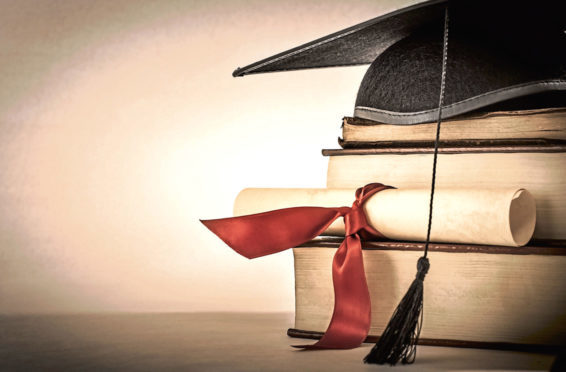The suggestion by a Dundee law lecturer that middle class students should subsidise poorer youngsters is no doubt well intentioned, but it completely fails to address the problem of widening university access.
Elizabeth Comerford, the director of Dundee University’s professional legal practice diploma, has proposed that students are means tested by the government. Those with resources can then pay their less well-off peers a levy of £500 a year – or £2,000 over the four years of a Scottish law degree – Comerford argues, in a written submission to Holyrood’s justice committee, which is looking at ways to increase access to legal education.
There is already some kind of safety net, in the form of a £2,500 support grant from the Law Society of Scotland, but apparently only eight out of 60 applicants were successful, according to a report in this paper on Monday.
Scotland’s record on getting disadvantaged pupils into university is the lowest in the UK, a dismal achievement brought about by the SNP’s insistence on free tuition for all.
Until the nationalists admit they have made a mistake, no amount of sticking plaster solutions, such as Comerford’s, will help level the playing field.
The Sutton Trust found in a 2016 report that 18-year-olds from the most privileged areas of Scotland were four times more likely to go to university than those from the least advantaged areas, despite the lack of university fees.
In England, where students pay £9,000 a year, teenagers from the wealthiest neighbourhoods are just over twice as likely to go to university as those from the least well-off areas, and three times as likely if they’re from Northern Ireland or Wales.
Without the funds from fees, there is not enough money in Scottish coffers to support young people through the expense of further education.
There was a 53% drop between 2005-06 and 2014-15 in the amount of bursaries and grants provided to Scottish students, and a 111% increase in student loans, according to an Audit Scotland survey in 2016.
And it has been well documented that college places in Scotland, often the only route to higher education for many poorer children, have been sacrificed to pay for the SNP’s free tuition gamble.
These are not new statistics; it has been clear for years that a blanket giveaway like free tuition cannot be sustained and that it is the very people it is designed to help who suffer most.
But the nationalists are politically incapable of acknowledging that in university access, Westminster has the more egalitarian policy.
The consequences are now all too obvious, with cash-strapped Scottish universities increasingly dependent on fee-paying students, both from the rest of the UK, and outside the EU.
It is no secret that there is a cap on the number of Scottish students accepted by Scottish universities but the extent of this financial bias is hard to quantify.
Figures from Ucas, the university admissions board, showed that application rates from 18-year-olds in disadvantaged areas in Scotland decreased in 2018, although there are schemes to encourage this group, while applications from the most affluent areas rose.
Meanwhile, there was also a 13% increase in applications to Scotland from international students from outside the European Union.
Not only does free tuition make it harder for universities to expand their overall intake, but they must weigh up prospective students on their ability to pay.
Although some middle class parents protest that their children will be squeezed out to accommodate the state’s social engineering, it is actually pupils from disadvantaged homes who are the biggest losers in the system.
Anecdotal evidence points to a lowering of entrance requirements for overseas students, for example.
If this is the case, it is not the academically accomplished children of the professional classes who are being excluded.
Scottish children who already have an educational handicap, thanks to underperforming schools and no precedent at home of a tertiary education, may struggle to get the top grades required by the top universities.
If their applications must also compete against those from well-heeled international candidates on more generous academic offers, they have little chance.
Of course, ministers deny that a vote winner like free tuition hurts school leavers. Shirley-Ann Sommerville, the SNP’s higher education minister, said it was up to universities to “promote the opportunities available for learners from our most deprived backgrounds” and “push ahead with the implementation of minimum entry thresholds”.
But the failure to widen access is not the universities’ fault. Individual lecturers may be appalled at the lack of equal opportunities in higher education, but their hands are tied by the government.
It is time the SNP put the future of young Scots from all backgrounds before its short-term political ambitions.
